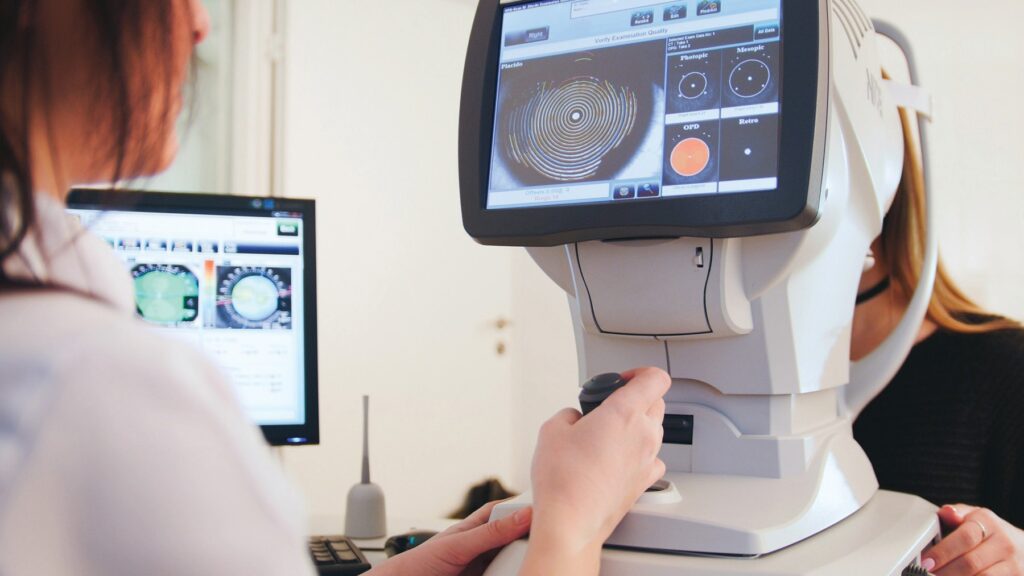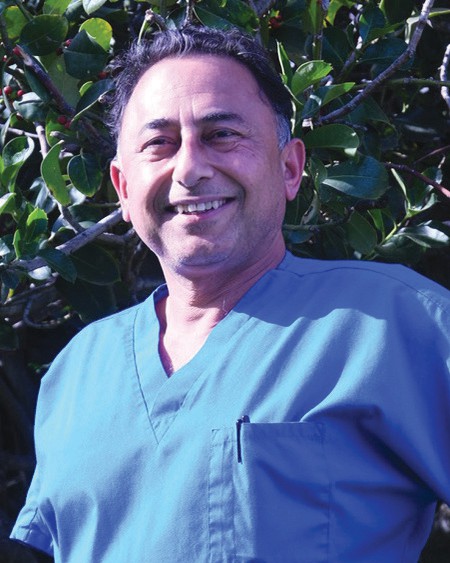Technology can detect early signs of eye degeneration
Rajesh Khanna, MD
From warm, sunny California we are going to discuss the latest diagnostic technologies for early detection of macular degeneration.
Yes, it’s sunny here, but the UV radiation in the sun is one of the factors that can cause macular degeneration. Genetic factors— what’s inherited from ones parents—being the other one.
The goal of using these new technologies is to possibly stop the progression of the blinding disease.
If people around 50 years of age are screened to detect signs of macular detection, intervention can delay or prevent manifestation of the full-blown disease in the 60s or later years.
There are three ways of early assessment of macular degeneration, and they can be classified whether they check function, structure or risk factors. The first two are what an eye doctor specialize in.
Functional assessment
This checks the assessment of function of the macula of the eye.
Macula is that part of the back of the eye that is most important for seeing.

The functional testing relies on dark adaptation, which is defined as the ability of the eye to adjust from light to darkness.
This test has been around for a long time but would take an hour or so, making it unfeasible for quick screening.
A remarkable machine known as dark adaptation unit or AdaptDx from Maculogix has brought the time down to six to seven minutes; hence, it can be used to screen quickly.
The patient and entire unit has to be in a very dark room with a technician monitoring the test. No dilation is required. One can drive home after the test.
Dark has been shown to be a reliable predictor of onset of early macular degeneration. In a study it was shown to predict onset of macular degeneration three years before even the first drusen was visible.
Of course, this can be repeated every six months to a year. Doctors can see how accurately it’s repeatable and also monitor the progression. It can also help evaluate the effectiveness of any treatment. Medical insurances even cover the testing in some situations.
Structural evaluations
Optical Coherence Tomography is a machine that uses infrared technology to pass below the surface to “see there.” So, it’s almost like an MRI scan to see below the retina into the deeper layers of the eye.
For those who don’t know, macular degeneration begins below the surface in the choroidal region where lipofuschin or waste material starts getting accumulated there.
The book “Rejuvenate Aging Eyes,” by Rajesh Khanna, MD (available on Amazon), states that this technology can help determine who’s a good candidate for presbyopia implants.
If there are any abnormalities like excessive pigment or drusen multifocal presbyopia, implants should be avoided.
Surface evaluations
The third technology is based on something doctors have been using for 200 years. Peering inside the dilated eye with light and lens, doctors have been amazed with the colors and abnormalities. Doctors have traditionally looked at the surface of the macula for physical changes. Smaller changes were difficult to visualize.
Now using advanced optics and artificial intelligence, fundus cameras like Clarus from Zeiss can take picture of the entire fundus or back of the eye.
Any area of interest can be magnified without losing the details. Artificial intelligence can digitally subtract old pictures from new ones to detect minor progression.
In summary, these three groundbreaking technologies are complementary and can be combined to get early detection of macular generation, monitor proregression, and analyze effectiveness of any treatment.
Courtesy of Rajesh Khanna, MD. Khanna Vision Institute has these technologies at the Moorpark and Westlake Village locations. For information, call (805) 230-2126 or go to www.KhannaInstitute.com.








Gloss